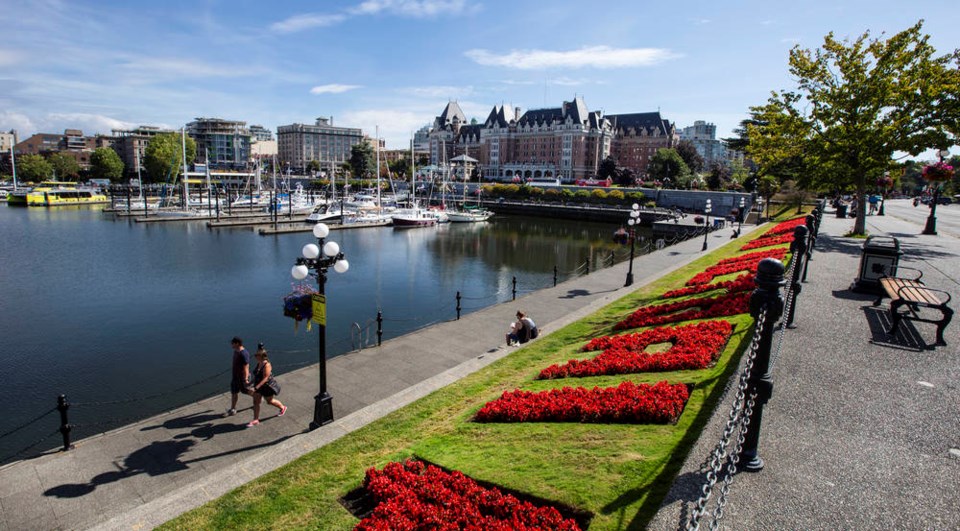Paul Nursey, Royce Chwin and Nancy Small
A commentary by the CEOs of Destination Greater Victoria, Tourism Vancouver and Tourism Richmond.
As the summer draws to a close, and the province nears a decision on how to allocate its $1.5-billion recovery package, it would be easy for some people to make the false assumption that a strong August for some tourism operators means the B.C. tourism sector is on the road to recovery.
Nothing could be further from the truth.
Unlike the forestry, mining, technology, and manufacturing sectors for whom the borders have remained open for trade, tourism is the only industry that has been virtually shut down by government by the closure of our borders to international travel.
And while that was the right thing to do to keep us safe, it has crippled thousands of tourism businesses and jobs reliant upon international visitors. Our cities have been particularly hard hit. When our airports and borders closed to international travel, our cities lost their most lucrative markets.
Travelers from the United States spend twice as much as domestic travelers, and non-U.S. international travelers three times as much. As our peak season winds down it’s clear now that revenue from local travelers and staycations will never come close to making up for the millions of international travelers we’ve lost.
Cities play a distinct role in the visitor economy. They are strategic gateways to communities across the province. In a highly competitive world, they are the front door attracting visitors, critical investment, and human capital. Cities act as transportation hubs, convention destinations and are centres of major tourism infrastructure.
Tourism businesses in our cities are in serious trouble and this is the canary in the coal mine for the rest of the province.
One of the most important measures of our sector’s health is hotel occupancy rates in our larger cities. Before COVID-19, yearly hotel occupancy in Greater Victoria and the Lower Mainland was in the range of 75-80 per cent.
Year-to-date, Greater Victoria 2020 hotel occupancy is 34 per cent. In Vancouver, it sits at 26 per cent during the summer. And in Richmond (which had the highest hotel occupancy in Canada over the last few years) it is even lower.
Through July in our provincial capital, a city where two in five working people are employed either directly or indirectly in the visitor economy, overall tourism revenue in Greater Victoria is down a staggering 68 per cent from 2019. These losses have serious implications.
The projected economic losses on tourism in Metro Vancouver is equivalent to $9.8 billion in visitor spending, $5.8 billion in GDP, $2.6 billion in taxes to government and 72,000 full-time equivalent jobs.
And if tourism businesses fail, there will be no jobs for these people to return to next spring.
In B.C., cities anchor the province’s visitor economy, which is an industry of industries – hotels, attractions, airlines and airports, retail, restaurants, festivals, conferences and events.
All these businesses are interconnected and have a direct impact on a vital supply chain including food and beverage providers, farmers, caterers, transportation, and construction to name just a few.
This entire economic network is at risk if the visitor economy is severely damaged. We are already seeing the impacts in our communities.
The potential loss of tourism amenities, experiences and infrastructure should concern all British Columbians who value their quality of life and their jobs.
Tourism Vancouver, Tourism Richmond, and Destination Greater Victoria support Tourism Industry Association of British Columbia’s $680 million proposal to preserve our vital tourism businesses until next year. A strategic investment as part of the provincial and federal governments’ economic recovery plan will be the difference.
Without government help, we are at risk of seeing large-scale business failures in world-class B.C. tourism destinations. And business failures in B.C.’s gateways will have a domino effect negatively impacting businesses in more remote parts of the province.
The British Columbia visitor economy is one of the largest economic sectors in the province, employing 300,000 people – 160,000 of them in jobs reliant upon international travel. Before the COVID-19 pandemic, U.S. and international travelers fueled an industry that has contributed more than $20 billion annually to the provincial economy.
